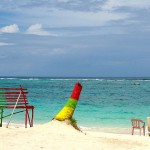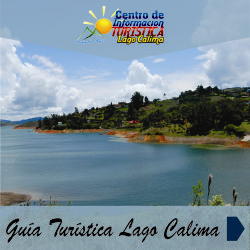It is probable that the islands were seen by Christopher Columbus during his fourth voyage in 1502 but there is no evidence to confirm this. In 1510 Spain took official possession of the islands, but did not promote settlements on them, because the conquerors were more concerned with subduing the continental areas.
The History of San Andres is turbulent and full of famous celebrities. The documentation of the Island in the books started around the 16th century when the Spanish made maps of the Caribbean Sea and added the Island of San Andres. But it is said that Christopher Columbus has visited San Andres between 1492-1500 in his fourth exploration voyages, as written in history books. In the late 16th century the Dutch used the island as a safe haven from pirates and smugglers but the first real settlement came in 1628 when the British arrived.
16th century – San Andres Colombia
The history of both San Andrés and Providence includes stories of pirates, their invasions and occupation of the islands. The first appearance of San Andrés on Spanish maps was in 1527. The Dutch are reported to have come to these islands at the end of the 16th century and English settlers arrived there in 1628. It is also mentioned that Columbus came across these islands during his fourth voyage of exploration.
17th century – San Andres Colombia
The English Puritans were the first to arrive to the islands; they hailed from Barbados and also from England. Between 1627 and 1629, they came to settle in the salubrious climate and take advantage of the fertile land of the islands. The Puritans evicted the Dutch settlers in 1631. Some settlers also came from Wales. All colonists first came to San Andrés and later moved to the Providence Island colony on what is now Providencia Island as its mountain terrain provided fresh water resources and safety from invaders. Slaves were brought from 1633 onwards from Jamaica. They were initially brought to work in lumbering, as well as to grow cotton and tobacco.
In 1635, the Spaniards, realizing the economic importance of the island, attacked the archipelago. However the Spaniards were driven out soon after they occupied the islands. Privateers also operated from the island, including Welsh privateer Sir Henry Morgan, who used it in 1670 as one of the centers of his operations. The privateers attacked Spanish ships carrying gold and other precious material that sailed in the Caribbean waters but the convoy system of the Spanish treasure fleet made it more difficult. They also attacked Panama and Santa Maria. The bounty looted by the privateers is still believed to be hidden in some underwater cave in the area.
18th century – San Andres Colombia
After the failed Spanish invasion of the islands, they were controlled by England until 1787, when they agreed to return control of the island to Spain. In the year 1792, by royal warrant on 20 May, the Spanish informed the Captain General of Guatemala, Don Bernardo Troncoso, to recognize the archipelago as under Spanish control. The Catholic religion was spread on the island and a church was built and run by its own priest. San Andrés gave exemption from import and export taxes.
19th century – San Andres Colombia
On November 25, 1802, the inhabitants of the archipelago requested that they depend on the Viceroyalty of New Granada with the Mosquito Coast, and not on the Captaincy of Guatemala. The document was signed by Mr. Roberto Clark, procurator, Isaac Brooks, Solomon Taylor, Jorge Olis, and Juan Taylor. As early as 1803, reports suggest that it was for political and economic reasons that San Andrés became a dependent Viceroyalty of New Granada.
In 1810, factions in New Granada declared independence from Spain. Councils were established in San Andrés and Providence in this year. The government of Tomás O’Neill granted land titles to English and Spanish-speaking families of the two islands assuring people the ownership of the land. In July 1818, Luis Aury, and the independent forces of Simón Bolívar occupied the islands, and it became part of Gran Colombia on June 23, 1822.
In 1821, the issuing of the Constitution of Cúcuta determined that every child born in Colombia, was born as a free citizen. This at a minimum meant the eventual abolition of slavery in San Andrés.
On March 5, 1825, a League and Confederation Treaty with the United Provinces of Central America was signed and on June 15, 1826, the Treaty of Union, League and Confederation, between the Republics of Colombia, Central America, Peru and Mexico was signed in Panama in that “Contracting Parties shall ensure the integrity of its territories, then, under special conventions and to hold each other, have been demarcated and set their respective limits, the protection will then be placed under the protection of the confederation.”
After independence was recognized by the coastal territories of the Caribbean Sea, the British proclaimed an independent territory in disregard of treaties and agreements of the time but the island remained free from British autonomy. In 1848, Tomás Cipriano de Mosquera declared San Andrés as a Free port. In 1851, slavery was abolished by the constitution of Colombia,[13] which led to a successful literacy movement led by pastor Philip Beekman Livingston.
20th century – San Andres Colombia
In September 1900, France issued a ruling in which it recognized all of the islands of the archipelago as belonging to Colombia. In 1902, two commissioners of U.S. President Theodore Roosevelt came to San Andrés by boat and requested that the islands become part of Panama, but American proposals were rejected outright as unpatriotic, proving local loyalty to the Republic of Colombia. In 1903, the Colombian Department of Panama became an independent nation. The islanders again refused to join the United States or Panama when they were visited by a U.S. warship in the same year. On 26 October 1912, the Municipality of San Andres and Providencia was established by Law 52, giving administrative independence. In August 1920, a boundary treaty was signed between Colombia and Panama in Bogota. On 24 March 1928, the Esguerra-Bárcenas Treaty was signed, in which Nicaragua recognized Colombia’s sovereignty over the Archipelago of San Andrés, Providence and Saint Catherine.
In November 1943, Colombia joined World War II, because a German submarine sank one of their boats that had to transport British troops to San Andrés. In 1953, at the request of several representatives of the island community, President Gustavo Rojas Pinilla reaffirmed the San Andrés Island and the free port. In 1972, the archipelago was declared as a Special Municipality. In the Colombian Constitution of 1991, the Department Archipelago of San Andrés, Providence and Saint Catherine was established as one of the Departments of Colombia. In 2000, the archipelago of San Andrés, Providence and Saint Catherine became a UNESCO World Biosphere Reserve as per of the five biosphere reserves listed with the UNESCO’s Man and the Biosphere programme.
21st century – San Andres Colombia
In 2001, Nicaragua National Assembly declared the Bárcenas-Esguerra Treaty null because it claimed that it was signed under pressure of US army occupation (1928–1933). Nicaragua signed a boundary treaty with Colombia, in which it disputed the boundaries alleged by Colombia at 82 degrees longitude. In 2007, the International Court of Justice announced that the 1928 Bárcenas-Esguerra Treaty of 1928 wasn’t a boundary treaty between Colombia and Nicaragua. Nicaragua filed a formal complaint to the International Court of Justice in The Hague, claiming territory east of longitude 82, as their continental marine platform included sovereignty over the archipelago of San Andrés.[18] On 13 December 2007, the ICJ recognized the full sovereignty of Colombia over the islands of San Andrés, Providence and Saint Catherine, but left open the question about the demarcation of the maritime boundary and the sovereignty over the cays of Serranilla, Quitasueño, Serrana, Roncador and Bajo Nuevos with Nicaragua. The ICJ also ruled it “upheld preliminary objections of Colombia to its jurisdiction only insofar as they concerned sovereignty over the islands of San Andrés, Providence and Saint Catherine”.
➡ Discover more about Colombia: Cartagena is a city that is located on the shores of the Caribbean Sea, in the northwestern part of the South American continent. If you are wondering where is Cartagena in Colombia
Tours & Tickets in San Andres Colombia
| SAN ANDRES TRAVEL GUIDE |
| Related Articles |
If you’re travelling to San Andres Colombia, we help you:
![]() General Information About Colombia: National symbols of Colombia – Colombia: living history – Geography of Colombia – Economy of Colombia – Languages of Colombia
General Information About Colombia: National symbols of Colombia – Colombia: living history – Geography of Colombia – Economy of Colombia – Languages of Colombia
![]() Practical information about Colombia: Climate – How to get to Colombia – Visa, Customs, Documentation and Taxes – Embassies and consulates in Colombia – Health and vaccination – Emergency numbers – Culture of Colombia – Measures and Electricity – Currency of Colombia
Practical information about Colombia: Climate – How to get to Colombia – Visa, Customs, Documentation and Taxes – Embassies and consulates in Colombia – Health and vaccination – Emergency numbers – Culture of Colombia – Measures and Electricity – Currency of Colombia
![]() Tourist Information about Colombia: General Information – Practical information about Colombia – Adventure Colombia – Hotels and accommodations in Colombia – How to Get to Colombia – Gastronomy in Colombia – Colombia’s Best Festivals and Carnivals – Tourist Attractions in Colombia – Foreign Embassies and Consulates in Colombia – Tips and advice for travel in Colombia – Top 10 Colombian Travel Destinations – Natural regions of Colombia – Cultural Tourism in Colombia – UNESCO Intangible Cultural Heritage Lists – UNESCO Heritage Sites in Colombia – Top 10 amazing places to visit in Colombia – Colombian Cuisine – Tourism of Nature
Tourist Information about Colombia: General Information – Practical information about Colombia – Adventure Colombia – Hotels and accommodations in Colombia – How to Get to Colombia – Gastronomy in Colombia – Colombia’s Best Festivals and Carnivals – Tourist Attractions in Colombia – Foreign Embassies and Consulates in Colombia – Tips and advice for travel in Colombia – Top 10 Colombian Travel Destinations – Natural regions of Colombia – Cultural Tourism in Colombia – UNESCO Intangible Cultural Heritage Lists – UNESCO Heritage Sites in Colombia – Top 10 amazing places to visit in Colombia – Colombian Cuisine – Tourism of Nature
Flights, Cheap Airfare Deals & Plane Tickets |




